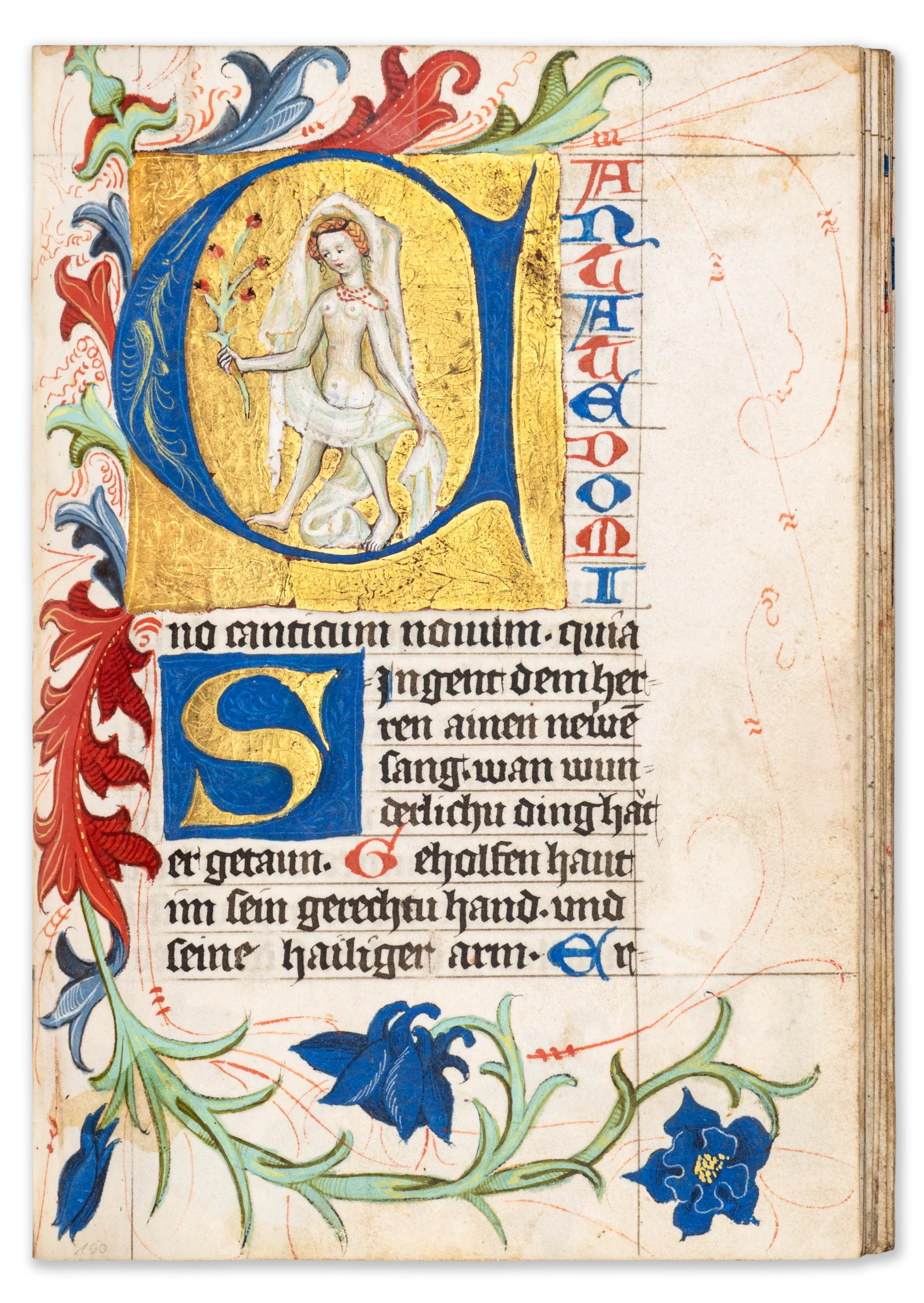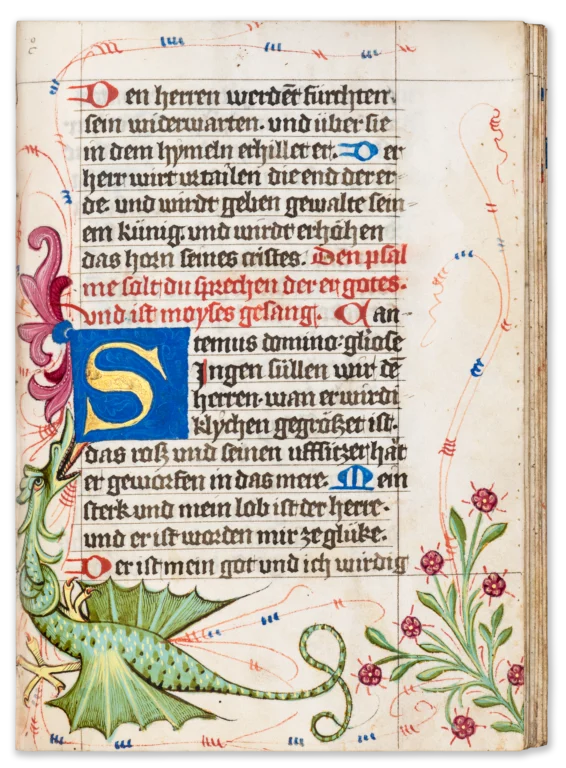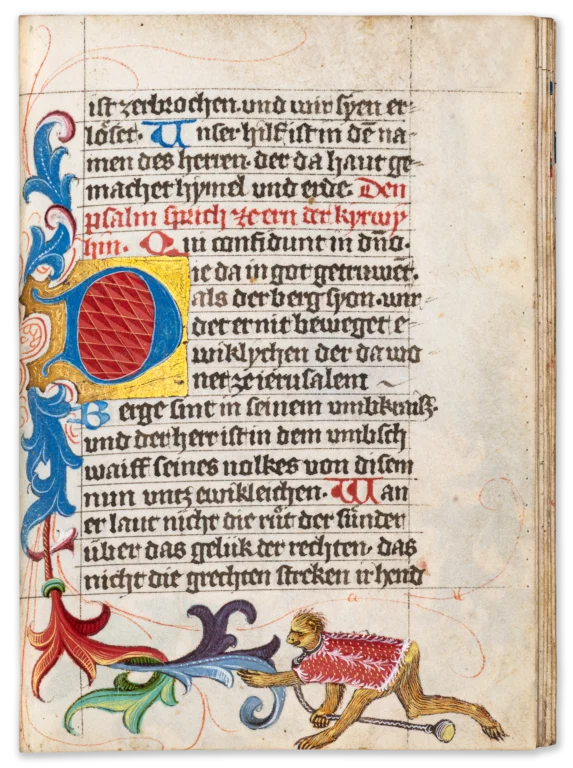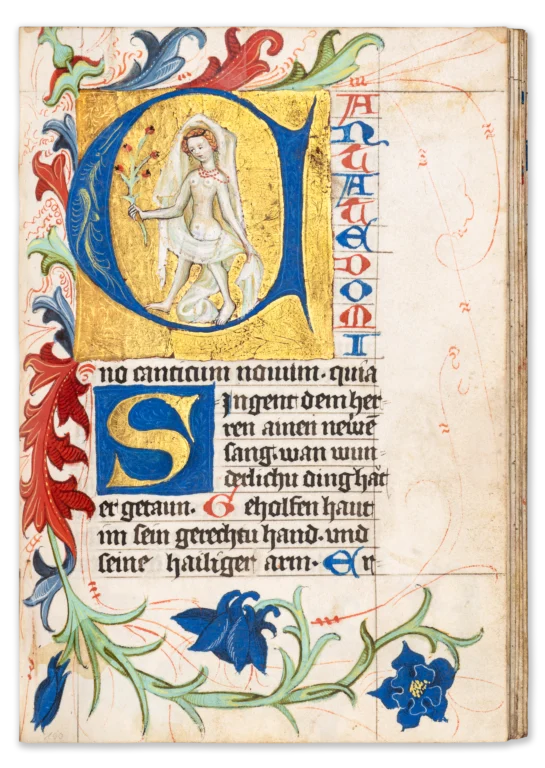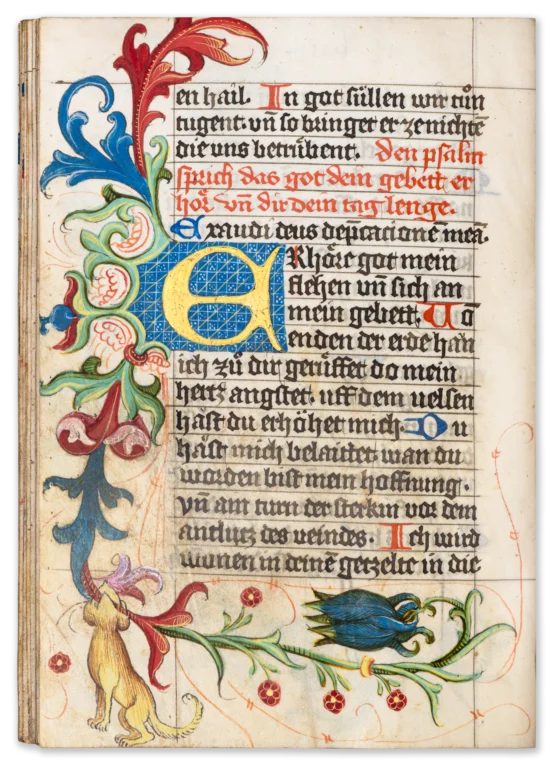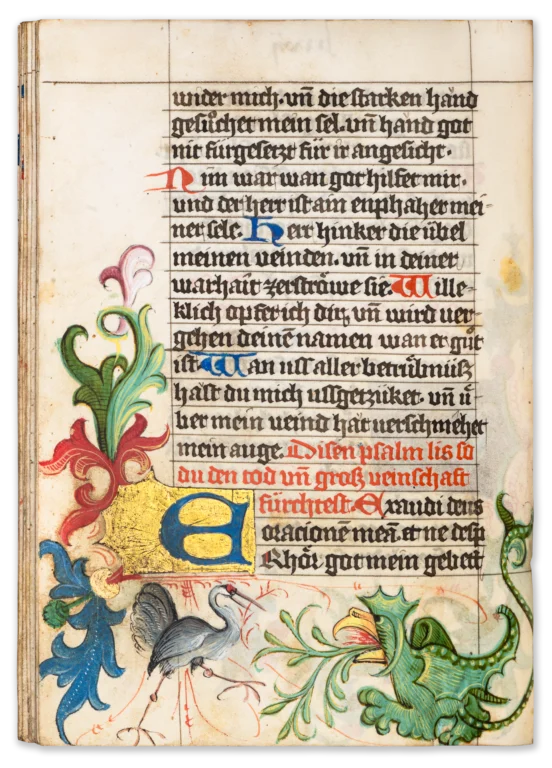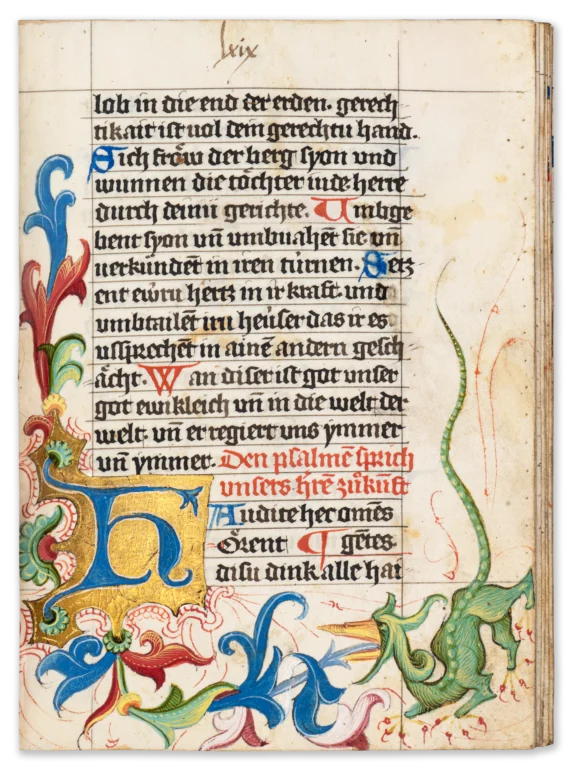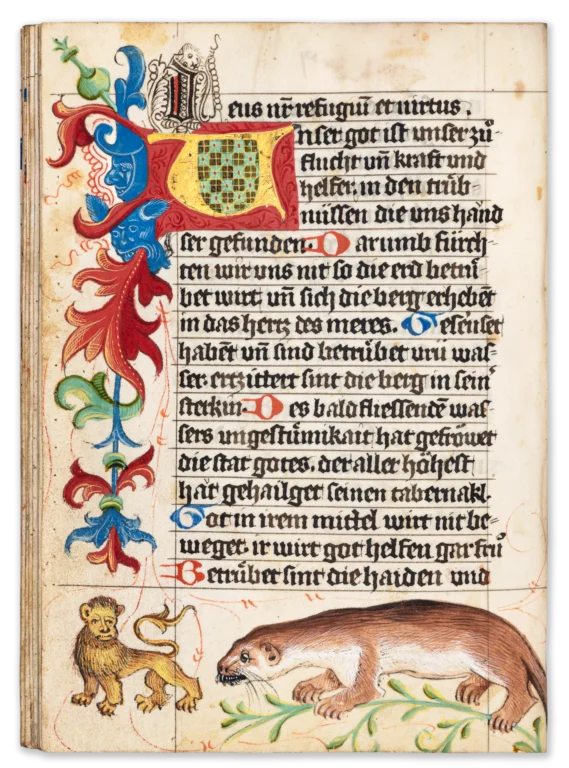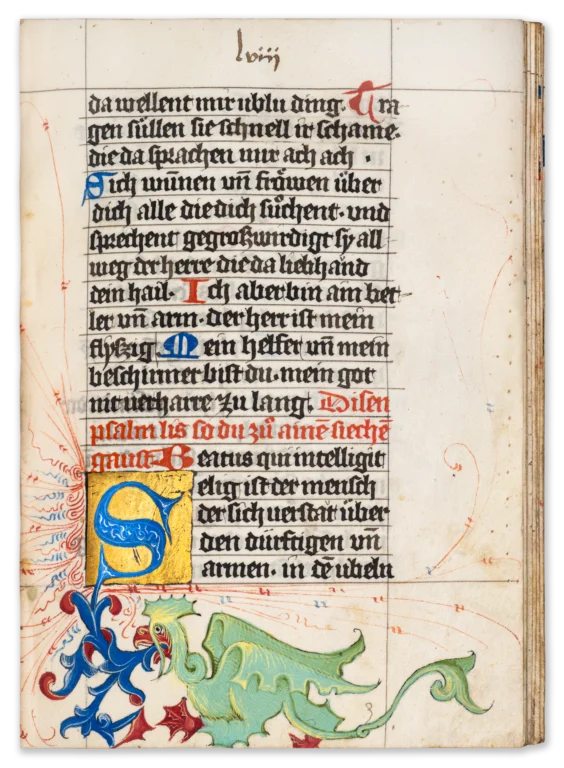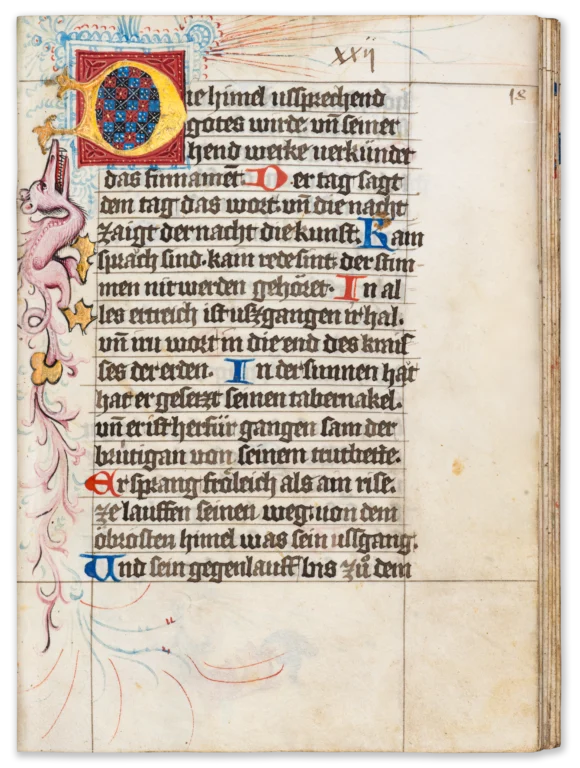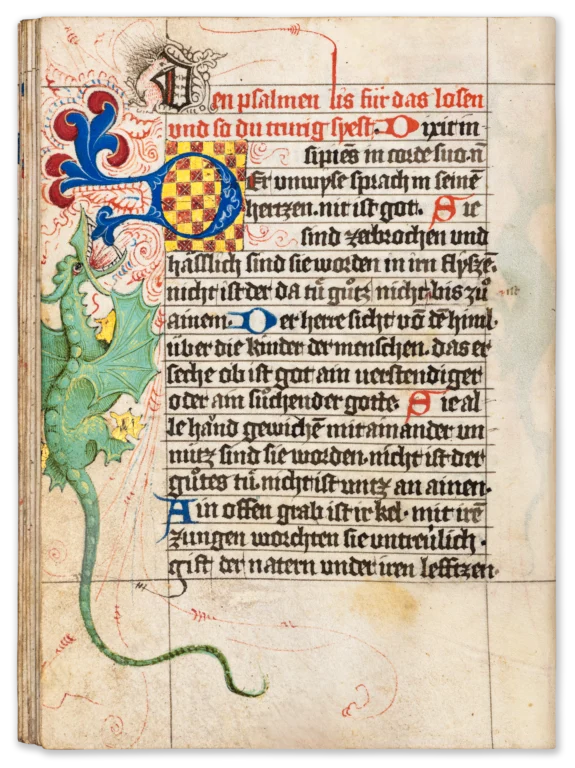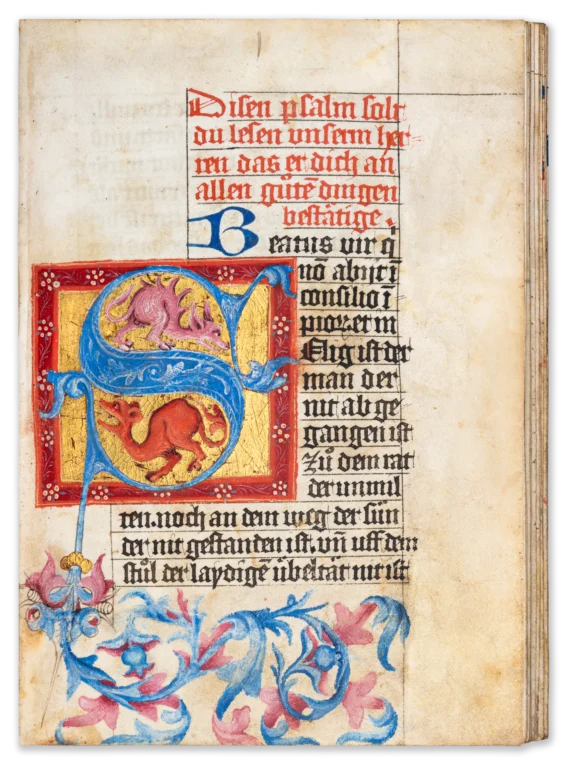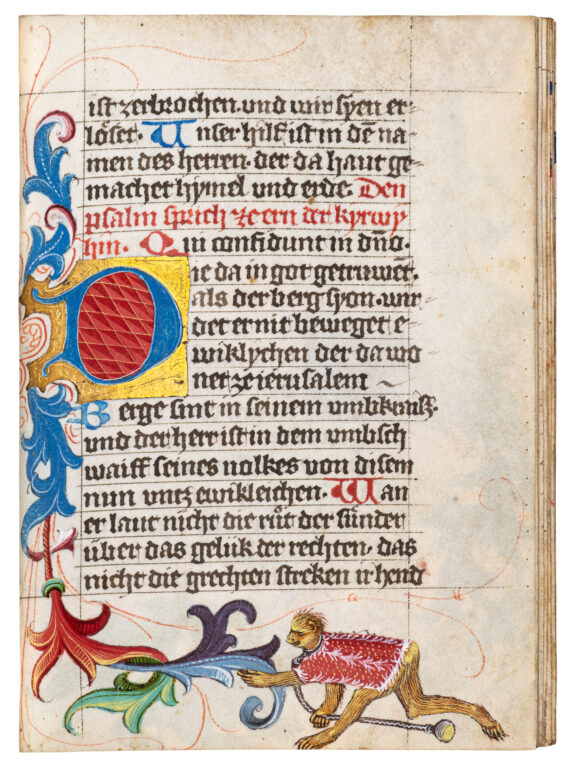The Psalter of Count Ludwig the Younger of Oettingen
Manuscript in German and Latin on vellum
Germany, Swabia, 1418
175 x 125 mm
252 leaves. Six large historiated initials and very nine large decorative initials, all with partial borders of acanthus, often with dragons, grotesque creatures, birds, beasts, and insects; over 135 mostly four- to five-line initials and 18 three-line initials. Complete. 19th-century book-shaped box opening at upper ‘joint’ with gilded ‘fore-edges’, pink velvet ‘binding’ and metal catch and clasp, (paper lining split at upper ‘joint’). Very good condition.
The "Dragon Psalter" of Count Oettingen
This sensationally illuminated psalter was compiled in only 16 weeks by the Cistercian Oswald Braytenveld of Steinheim at Alerheim for Count (Graf) Ludwig XII. the Younger of Oettingen (c. 1384-1422).
This manuscript is exceptionally luxurious rendition of a German psalter. German psalms were usually rendered in prose form. Most of these vernacular texts were based on Jerome’s translation from Greek into Latin, the so-called Psalterium Gallicum. Only very few and special exceptions can be found in verse form. Psalms were among the most important biblical texts for the liturgy. The increasing interest in vernacular versions of the Psalms as an isolated book was mainly due to the fact that in the late Middle Ages more and more monastic orders and congregations were founded with numerous affiliated houses.
In the 14th and 15th centuries, demand for private devotional books rose sharply among wealthy lay people, i.e. members of the nobility and the upper middle class. In his article on German psalters, Wolfgang Augustyn explains that Psalters were rarely as richly and imaginatively decorated as the Books of Hours and other types of prayer books. In this respect, extravagantly illuminated psalters such as that of Count Ludwig the Younger were the absolute exception.
Although our manuscript was undoubtedly written and illuminated in southern Germany, it is evident that Bohemian book illumination had a strong influence on the creation of our stunning and richly illustrated Psalter. At the time of Emperor Charles IV and his sons Wenceslas IV, and Sigismund, Bohemia was a veritable melting pot of different European artistic styles and soon influenced the artistic production of adjacent regions, above all Austria and southern Germany.
The pages of Count Ludwig’s Psalter are often decorated with dragons. In some cases, they appear in the initials, very unusually in the most important incipit in the Psalter on f. 1r two dragons are snarling in a monumental letter S. Another, painted in camaïeu bleu on f. 40r, and his pink companion on f. 49 have to make a huge hump to fit into their respective letters. On f. 58r, the body of the letter S is shaped like a dragon. Most dragons, however, live in the borders of numerous leaves.
The explanation for this frequent appearance can certainly be found in Ludwig of Oettingen’s membership of the Order of the Dragon (Societas Dragonis), which King Sigismund of Hungary, son of Charles IV, founded in 1408 with his wife Barbara of Cilli and which included aristocratic members of the highest rank. Surprisingly, the order also admitted women from the beginning, most likely because Sigismund’s wife was on of the founding members. The inner circle of the Dragon Order consisted of 22 members from the high nobility. One year after the order was founded, members from other countries were invited to join. The stated aim of the society was to fight the enemies of Christianity, heresy and schism.
